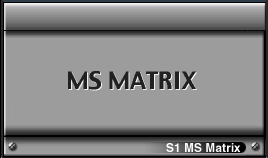You’ve probably been hearing a lot about mid-side processing and are thinking, “great, one more thing I have to learn just to make my tracks presentable.” Well, not really. MS processing is just another tool you can use to add depth to, or clean up, your mixes and in practise it is just another way to apply the fx and mixing routines you are allready familiar with. MS processing at its base is simply a different way of splitting up a stereo signal. Ordinary stereo signals are split between a left and right channel, whereas an MS processor takes a stereo signal and splits it between the sum and difference channels. The sum channel would be any audio signal which is equivalent in both the left and the right channel, or in other words, the mono audio material which is dead center in your stereo field. The difference channel would be all other audio content. The terms “sum” and “difference” are just another way of understanding “mid” and “side” processing.
Once you have your mix separated by its middle (sum) and side (difference) audio content, it will sound exactly the same as your usual left/right channel stereo mix with the notable exception that you can separately process the middle of your mix from the sides of your mix. This is useful in a myriad of ways, but here are some common uses of the technique:

She’s a thing of beauty ain’t she? Believe it or not, this unassuming little plugin can totally change the sound of your mix.
Continue reading →



